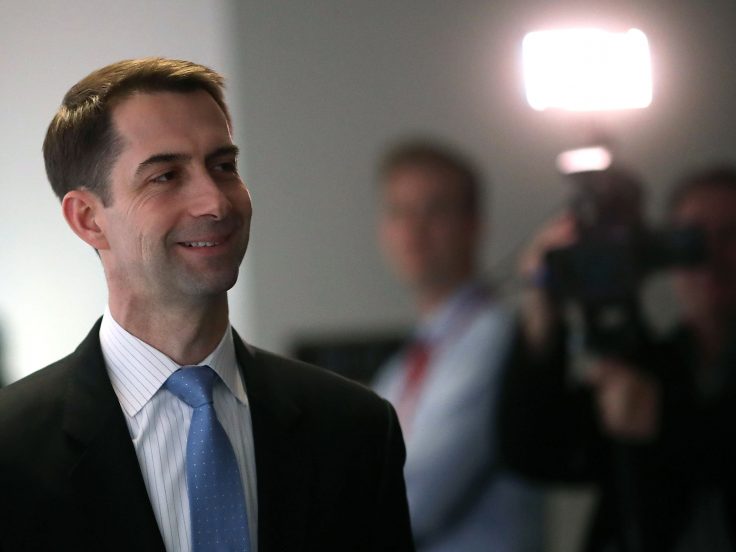A New York Times report this week criticizes pro-Trump media figures who downplayed the threat of coronavirus. Fair enough.
But it is worth examining how mainstream media outlets treated lawmakers who were warning about the virus and about China's potential malfeasance early on.
Sen. Tom Cotton (R., Ark.), for example, encouraged President Donald Trump in January to implement a travel ban from China. He told CBS's Face The Nation on Jan. 26 that China had a "record of dishonesty and incompetence" in combating health crises and cautioned that while Washington was consumed with Trump's impeachment trial, it was the viral outbreak that was the "most important story in the world."
Citing Cotton, a Politico report in early February warned that a travel ban and quarantine measures "could undercut international efforts to fight the outbreak by antagonizing Chinese leaders."
Cotton also argued that the virus might have originated at a Chinese biochemical lab in Wuhan that sits near the seafood market where Chinese officials initially claimed the disease originated. The New York Times accused him of spreading a "conspiracy theory," writing that it was "the sort of tale that resonates with an expanding chorus of voices in Washington who see China as a growing Soviet-level threat to the United States, echoing the anti-Communist thinking of the Cold War era."
"Right wing media outlets fan the anger," Times business correspondent Alexandra Stevenson wrote on Feb. 17. Presumably, the right-wing outlets providing a megaphone for this conspiracy theory were different from the ones that were dangerously minimizing the threat of the illness.
Heads, the Times wins; tails, Republicans lose.
What most mainstream news reports have refused to acknowledge is that when it comes to the coronavirus, the right, the left, and, unfortunately, the scientific experts are flying blind, writing and rewriting the rules ad hoc and trying to muddle through.
There have been enough miscalculations to go around. The Times's effort to classify them by political inclination is laughable. There was the Vox explainer published in early February comparing the coronavirus to the flu. "Half the people in America do not get a flu shot and the flu, right now, is far deadlier," CNN's Anderson Cooper said on March 4th. "So if you're freaked out at all about the coronavirus, you should be more concerned about the flu."
It is also worth noting which voices have proved prescient. The Washington Post’s David Ignatius, in a Friday column that quotes Cotton, writes now that alas, "scientists don’t rule out that an accident at a research laboratory in Wuhan might have spread a deadly bat virus that had been collected for scientific study."
He writes about a theory percolating in scientific circles about "an accidental lab release of bat coronavirus."
"Less than 300 yards from the seafood market is the Wuhan branch of the Chinese Center for Disease Control and Prevention. Researchers from that facility and the nearby Wuhan Institute of Virology have posted articles about collecting bat coronaviruses from around China, for study to prevent future illness. Did one of those samples leak, or was hazardous waste deposited in a place where it could spread?"
Will the Washington Post excoriate their own well-sourced columnist for "spreading a debunked conspiracy theory" as they did when Cotton offered the same informed speculation six weeks ago? Will the New York Times offer their readers an analysis of how the panicked Republicans of February were unfairly maligned by the millennial pandemic explainers at Vox?
At least those of us lucky enough to have masks won’t have to hold our breath.
